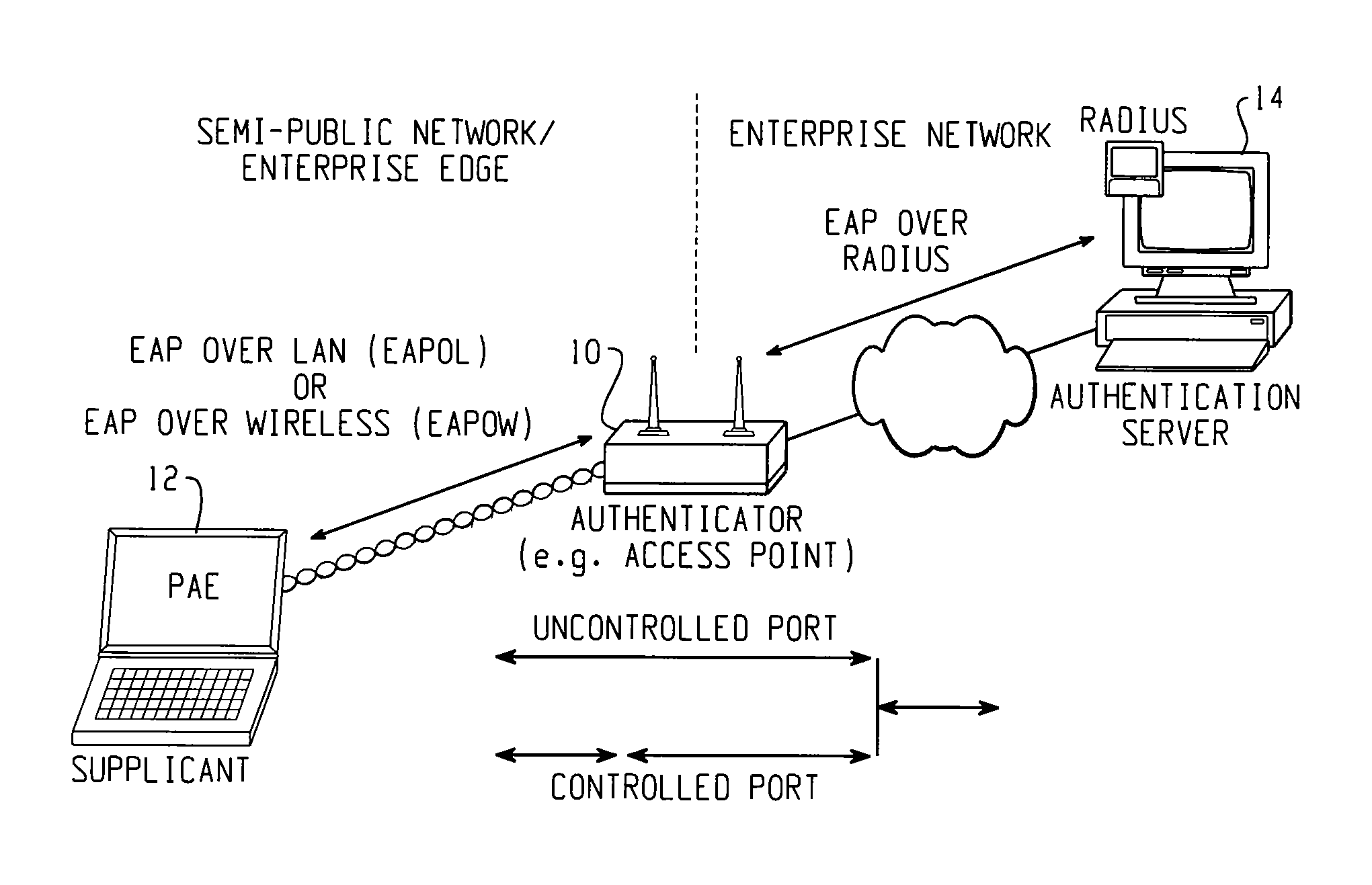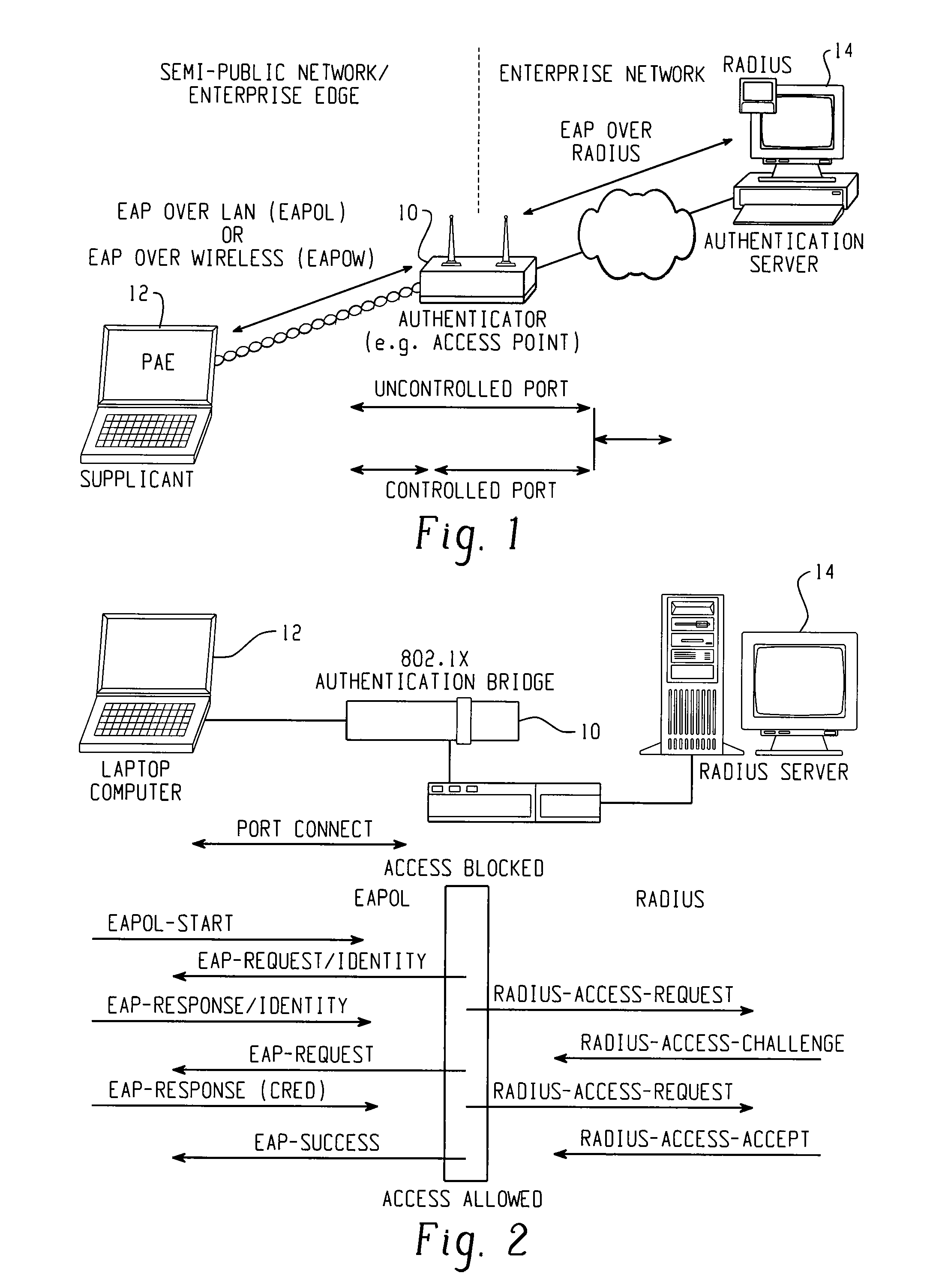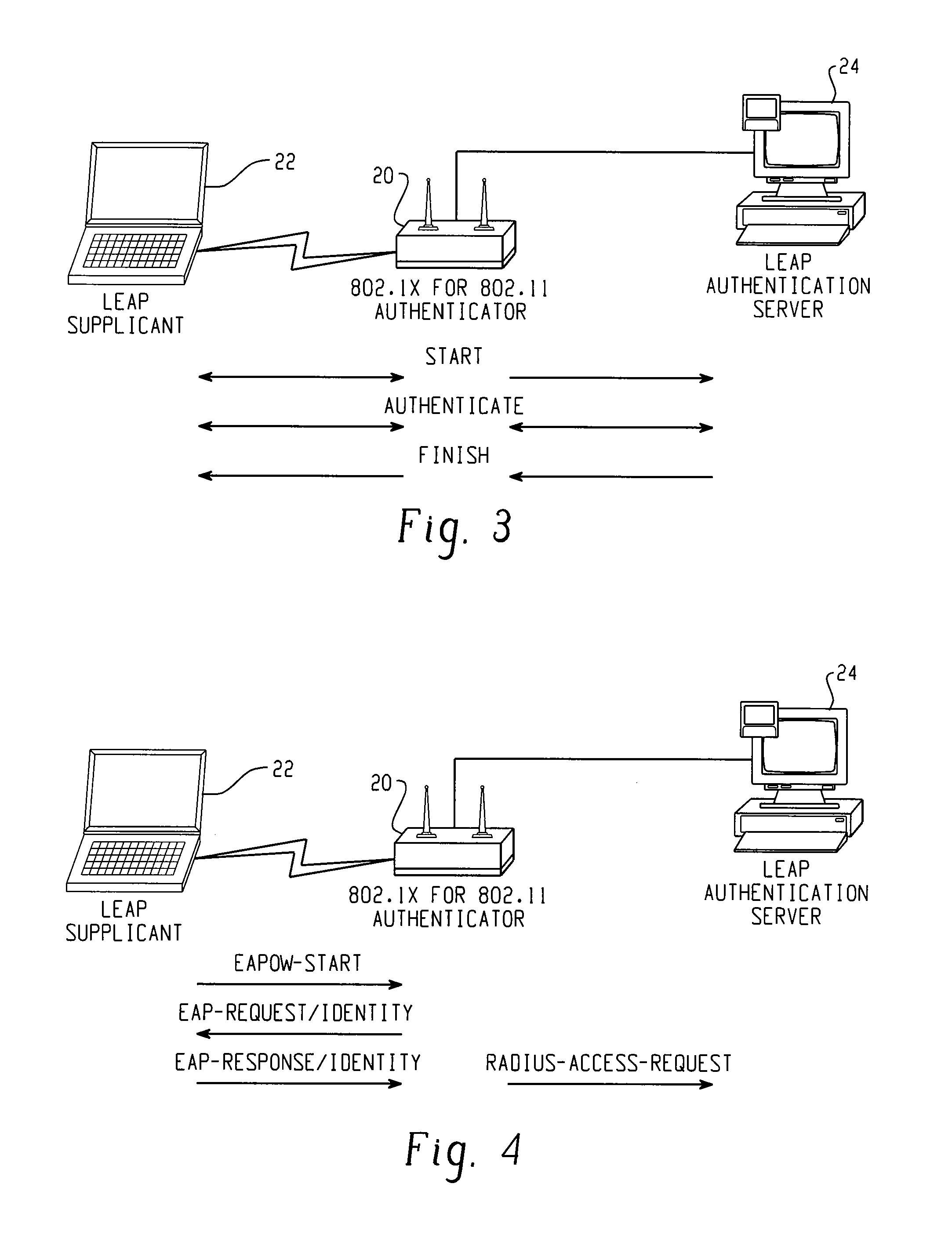Rogue AP detection
a technology of wireless lan and detection method, applied in the field of rogue ap detection, can solve the problems of not being able to associate, not being able to detect rogue aps, and not being able to mutually authenticate with clients, so as to reduce hardware cost and complexity and quick rollout of fixes
- Summary
- Abstract
- Description
- Claims
- Application Information
AI Technical Summary
Benefits of technology
Problems solved by technology
Method used
Image
Examples
Embodiment Construction
[0031]The present invention contemplates a flexible security framework to support enhancements that would overcome the disadvantages of previous systems. Cisco, Microsoft and several other vendors have endorsed the role of the developing IEEE 802.1X standard as the preferred framework for edge security and are actively participating in the standardization efforts to foster interoperable implementations. The IEEE 802.1X Working Group is chartered with the goal of providing an interoperable security framework for port based access control that resides in the upper layers (for example, above the MAC layer). The primary philosophy for the port based access control layer is to enable the plug-in of new authentication schemes and key management methods without changing switches, NICs, Access Points, and so on. Another goal is to also leverage the main CPU resources for cryptographic calculations. This security philosophy is intended to provide end users and customers with decreased hardwa...
PUM
 Login to View More
Login to View More Abstract
Description
Claims
Application Information
 Login to View More
Login to View More - R&D
- Intellectual Property
- Life Sciences
- Materials
- Tech Scout
- Unparalleled Data Quality
- Higher Quality Content
- 60% Fewer Hallucinations
Browse by: Latest US Patents, China's latest patents, Technical Efficacy Thesaurus, Application Domain, Technology Topic, Popular Technical Reports.
© 2025 PatSnap. All rights reserved.Legal|Privacy policy|Modern Slavery Act Transparency Statement|Sitemap|About US| Contact US: help@patsnap.com



